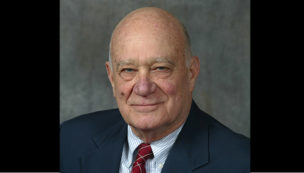During the 1980s, a creative approach to our regional power was developed by Fred Scheiner and Harry Wachtel (Roslyn) and Dan Jacobi (East Williston).
They gave birth to a political action committee, “The Twenty-third State.”
Showing that Nassau and Suffolk counties, were then more populous than half the states in our nation, the three North Hempstead citizens created the PAC and a newsletter to strive for electoral and policy changes.
They were ahead of the curve of a growing focus on suburban voters and their potential to shape state and national priorities.
In the years after they launched “The Twenty-third State,” influential books highlighted their early themes.
Notable was Kenneth Jackson’s “Crabgrass frontier: The Suburbanization of the United States.”
Subsequently, G. Scott Thomas published “The United States of Suburbia.”
When the PAC began, Nassau and Suffolk had only one Democratic member of Congress. Tom Downey, at age 25, had won election in the Watergate year of 1974.
Even after Ronald Reagan took office, Jacobi, Wachtel, and Scheiner felt challenged, but optimistic.
Building on close ties with Congressman Downey and his exceptional Suffolk staff, “The Twenty-third State” folks helped to elect Democrat Bob Mrazek in 1982. He defeated the Old Westbury incumbent, John LeBoutillier.
Mrazek, Downey, and “The Twenty-third State” won no other big progressive elections during the Reagan era, but they boosted the organizing efforts of the Long Island Alliance for Peaceful Alternatives, with its key North Shore affiliate, SANE/FREEZE (led by the Schaefers and Romaines of Great Neck).
Together, they contributed to the largest peace demonstration in American history when one million people gathered at Central Park on June 12, 1982 to protest Reagan’s nuclear policies.
Their sustained involvement played a role in the awarding of the 1985 Nobel Peace Prize to International Physicians to Prevent Nuclear War (vigorously supported by North Shore folks).
Those protest and reform movements represented real Long Island power, even as Nassau, in particular, and much of Suffolk, remained Republican fiefdoms.
But the times they are a-changin’, and Nassau and Suffolk are heading in new directions.
While Nassau and Suffolk may never achieve statehood (intended only metaphorically by “The Twenty-third State leaders), they are poised to exercise increasing power – regionally and nationally.
And, as the 1980s founders planned, progressives are likely to shape the future.
For many years, all nine state senators from Nassau and Suffolk were Republicans.
That concentration of power often meant that the majority leader of the Senate was a Suffolk or Nassau Republican; the bloc of nine senators could shape agendas for the rest of the state.
In 2016, two Democrats were elected among our region’s nine senators.
Now, Democrats have a voter registration edge over Republicans in both counties: 383,709 to 331,282 in Nassau and 325,059 to 311,442 in Suffolk (Board of Elections 2016 records). .
Just consider how New York politics could change if Democrats gained solid control of the state Senate (the drawing of election district lines to prevent gross partisan gerrymandering is the early key as populations shift on Long Island).
With a state Democratic ascendancy, New York could emulate Robert Lafollette’s Wisconsin (a century ago) as a “laboratory for democracy” for the rest of the nation.
There are three “wild cards” in the immediate future for Long Island power.
One is the large number of people in both counties who are not affiliated with any party [230,220 in Nassau, and 264,618 in Suffolk].
As Donald Trump descends to record new lows in polls (33 percent in recent Gallup), there could be ripple effects in suburbia, both for the unaffiliated and for the newcomers.
The second variable for change is population demographics. Asian-Americans are the fastest growing minority group in the U.S., and while they are diverse, their national support for Trump in 2016 was pegged at only 16 percent by Nate Silver, and 18 percent by the Asian-American Legal Defense and Education group. In 2016, only 24 percent of Latinos said they “identify with or lean Republican.”
In addition to ethnic bad news for Trump and his Long Island supporters, there is the third alarm that only 19 percent of millennials identified with the GOP in a new NBC News Gen/Forward poll.
While these 18-29 year olds are not thrilled with the Democratic Party, they share that group’s progressive views, and nearly 70 percent of them voted for Democratic candidates for governor this year in New Jersey and Virginia.
If these national trends continue, and as they are reflected on Long Island, the “blue wave” predicted for 2018 by The Wall Street Journal is likely to materialize, and it will permanently alter New York’s Senate.
Then say farewell to Long Island’s last state-wide power base for Republicans.



